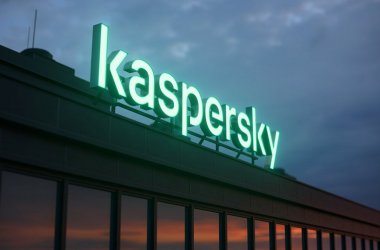
At this year’s EMC World, the IT giant integrated its strengths in storage and the cloud to present solutions that are aimed at helping enterprises handle the increasing volumes of unstructured, big data.
If cloud was the buzz word of last year and early this year, then big data – or the challenge of managing huge volumes of unstructured data – is set to be the topic of discussion among most big IT giants through into 2012.
At EMC World this year, the annual gathering that the IT giant invites its customers as well as press and analysts to, the firm spoke about the concerns of big data, and brought it into conjunction of the company’s cloud solutions.
“There are three crucial challenges facing the IT teams in enterprises. One is a growing budget dilemma, where the majority of budgets are still being assigned to maintenance tasks. The second is the growing concern of data deluge. In 2010, the digital universe was 1.2 zettabytes; in a decade this will grow to 35 zettabytes. Around 90% of the digital universe is unstructured. To keep up with this, server volumes will grow 1000% in a decade. At the same time, worldwide IT staff strength will increase by less than 50%,” said Joe Tucci, chairman, president and CEO of EMC in his opening keynote on the first day of the EMC World 2011 conference.
“Security is the third big pain point of global enterprises. In 2010 alone, 80% of Fortune 500 firms had botnet activity in their domains and 60% of them had email addresses compromised by malware, according to research. In addition to addressing these three pain points, we have to assure greater efficiency, control and choice, leading to greater agility. Enter the cloud – or the hybrid cloud,” said Tucci.
Tucci went on to expand how the cloud is necessitating transformation and opportunity across three layers – the infrastructure layer, where the hybrid cloud will bring together elements of public and private infrastructure, the applications layer, where new application platforms for this hybrid cloud will have to take shape and old ones will have to be virtualised, and finally on the end-user layer, where provisioning has to improve in order for apps to be accessible from any device, anywhere in the world.
According to Tucci, as big data management and the cloud come together – he termed this as a major intersection — EMC has the portfolio necessary (between EMC, VMWare and RSA) to handle the changes across all three layers of transformation.
“Our journey to the cloud and big data has been supported by big investment. Across the last eight years since 2003, we have spent over $10.5 billion in research and development (R&D) and another $14 billion on mergers and acquisitions related to technology. In 2011 we expect a revenue of $19.6 billion and we expect to spend more than $2 billion on R&D this year as well,” said Tucci.
To many at EMC, the proof of the investment was evident in the number of products and solutions that were launched at the conference.
There was the cloud tiering appliance, which will enable enterprises to link previously existing pools of VNX storage (EMC’s brand of unified storage) to clouds, whether private or hybrid. This can be done via the Atmos storage service, which the company announced a second version of during the conference as well.
The company also announced the promised update to the VPlex solution range, the VPlex Geo. The VPlex range provides a reliable system for enterprises to virtualise storage across local, metro and global areas. The Geo update provides for storage across 2600 miles and enables data to be replicated asynchronously between data centres that are located thousands of miles from each other.
The company also announced integration of its Greenplum acquisition, and painted it with the cloud brush, by announcing integration and support for the opensource Apache Hadoop, which is used for data-intensive distributed apps. The company introduced a high-performance, data co-processing Hadoop appliance — the GreenplumHD Data Computing Appliance. The appliance marries Hadoop with the EMC Greenplum Database, allowing the co-processing of both structured and unstructured data within a single, seamless a multi-faceted strategy that is designed to further drive adoption of this technology, lower costs for customers and dramatically speed storage and application performance.
“EMC’s flash strategy is all about making the shared IT infrastructure more efficient and dynamic. Placing the information on the right media at the right time and placing the information closer to the processor at the right time provides the highest levels of performance and also the highest returns on investment because all of the resources are fully utilised. The key to this is EMC’s FAST software that adds a level of intelligence based on usage to automate the movement of the data through the I/O stack and, most importantly, ensures the integrity of that data,” he said.
The strategy includes a new PCIe/flashbased server cache technology– code-named “Project Lightning” – due later this year that will move data closer to the processor to dramatically accelerate performance. Integrated flash in the server as cache and as storage in the array, combined with EMC FAST software, creates a single intelligent I/O path – from the application to the data store. The result is a networked infrastructure dynamically optimised for performance, cost and availability and significantly more reliable than implementations relying on
flash as direct-attached storage in the server.
According to Gelsinger, Lightning will be available in the second half of 2011 and will go into beta sometime during the middle of the year. EMC later this year also plans to introduce a new all-flash configuration of its VNX unified storage system that will enable support of more virtual servers and more intense workloads.
According to the company, it has sold and delivered several all-flash Symmetrix VMAX arrays to customers with extremely demanding I/O workloads already. Later this quarter, all-flash Symmetrix VMAX arrays will be offered as a standard configuration option.
With all these launches, EMC hopes to help enterprises address the growing challenge of big data, while giving them the advantages of the cloud. EMC World 2011 was abuzz with the solutions that had been launched and there is no doubt that on a long term strategy basis the firm seems to be heading in the right direction. However, its real test lies in how these strategies will be translated to on-ground field education and sales initiatives, especially in emerging regions like the Middle East. Will EMC be able to educate and align customers uniformly across the globe, or will it fail in this true test of transformation? The question that EMC should be asking itself.




